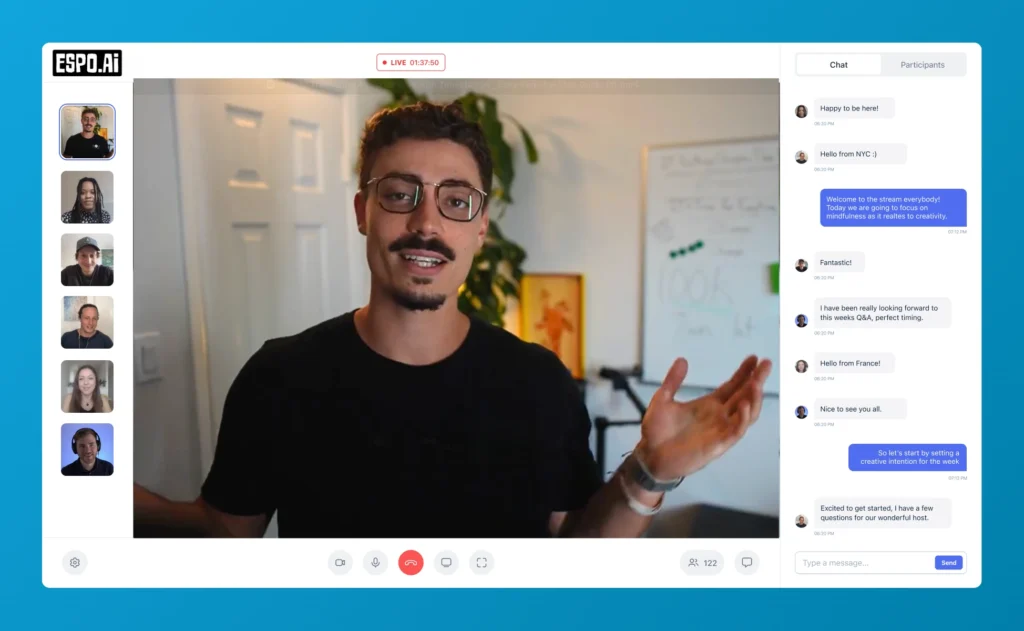In today's rapidly evolving AI landscape, effective prompting skills have become essential for anyone looking to harness the full potential of large language models. Whether you're a beginner just getting started with AI tools or an experienced user looking to refine your approach, understanding the different levels of AI prompting can dramatically improve your results. This guide will walk you through a progressive framework for mastering AI prompting skills, from the fundamentals to advanced techniques.
Before diving into specific prompting techniques, it's important to understand what a prompt actually is. At its core, a prompt is simply a conversational starter with an AI system. This initial input kickstarts the AI's thinking process and guides its response.
Tip: Remember that LLMs don't actually "read" your words as a human would—they interpret patterns based on their training. This is why clarity and specificity in your prompting are crucial for effective results.
Zero-shot prompting is the most straightforward way to interact with LLMs. As the name suggests, you're asking the AI to perform a task without providing any examples or specific guidance on how to respond.
How it works:
Example:
Explain the concept of photosynthesis in simple terms.
Zero-shot prompting works well for straightforward questions about topics the AI has been extensively trained on. However, when you need more specific outputs or need to tackle more complex problems, you'll want to advance to higher levels of prompting.
Few-shot prompting adds a powerful dimension to your AI interactions by guiding the model to produce outputs in a specific format and style. This technique is especially useful when you need consistent, structured responses.
How it works:
Example:
You are a product analyst. Analyze customer feedback in this format: Example 1: Feedback: "The app crashes whenever I try to upload photos." Analysis: Issue: Technical bug Severity: High (critical functionality affected) Impact: User frustration, potential user churn Recommendation: Prioritize bug fix in next sprint Example 2: Feedback: "Love the dark mode. Auto switch at night would be great." Analysis: Issue: Feature enhancement Severity: Low (nice-to-have) Impact: Improved user convenience Recommendation: Add auto-switch feature to product roadmap Now analyze these feedback items: "Search functionality is too slow, often takes 5+ seconds to return results." "Can't find the export data option mentioned in your tutorial." "The monthly subscription is a bit expensive compared to competitors."
Tip: For tasks you perform regularly, consider creating a custom GPT with your few-shot examples built into the system prompt. This saves you from having to repeat the same instructions every time.
Chain of Thought (CoT) prompting is a powerful technique for complex problem-solving tasks that require multiple steps of reasoning. This approach is particularly valuable when you need to understand the AI's thinking process or when working with complex, multi-step problems.
How it works:
Example:
You are a business strategy consultant. Develop a step-by-step analysis for a US-based electric vehicle company considering entering the European markets. Consider factors such as market demand, competition, regulatory environment, and potential challenges. Provide your reasoning with each step.
The benefits of Chain of Thought prompting include:
Chain of Thought prompting essentially turns the AI into a thinking partner that shows its work, making it ideal for tasks where the process is as important as the outcome.
Tip: You can combine few-shot prompting with Chain of Thought by providing examples of step-by-step solutions before presenting your actual problem. This helps guide the AI to use the reasoning pattern you prefer.
Chain prompting takes your AI interactions to the next level by creating a sequence of interconnected prompts, where the output of one prompt becomes the input for the next. This creates a workflow that can tackle complex projects requiring multiple stages of processing or analysis.
Unlike Chain of Thought (which shows reasoning steps within a single prompt), chain prompting involves completely separate prompts that build upon each other.
How it works:
Example of a marketing strategy chain prompt workflow:
Chain prompting is particularly effective for:
Tip: Tools like Perplexity.ai can be especially useful for the research portions of chain prompting as they can access current internet information, which can then feed into more creative or analytical prompts with tools like ChatGPT.
Knowing which prompting skill to use in different situations is key to getting optimal results:
As you practice these AI prompting skills, you'll develop an intuition for which technique works best in different scenarios. The goal is to build a versatile toolkit that allows you to communicate effectively with AI systems in any situation.
Mastering AI prompting skills is an ongoing journey that requires practice and experimentation. As you incorporate these techniques into your workflow, you'll discover new ways to enhance your productivity and creativity using AI tools.
To continue your AI prompting education:
For more advanced training and in-depth guidance on AI prompting, check out Espo.ai's complete course offerings, where you'll find structured learning paths, expert-created prompts, and access to a supportive community of fellow AI enthusiasts. Take your prompting skills to the next level and unlock the full potential of AI assistance in your work and creative endeavors.




